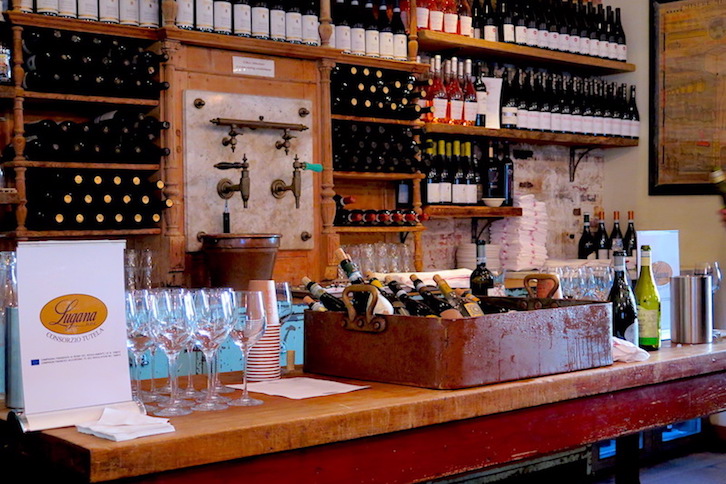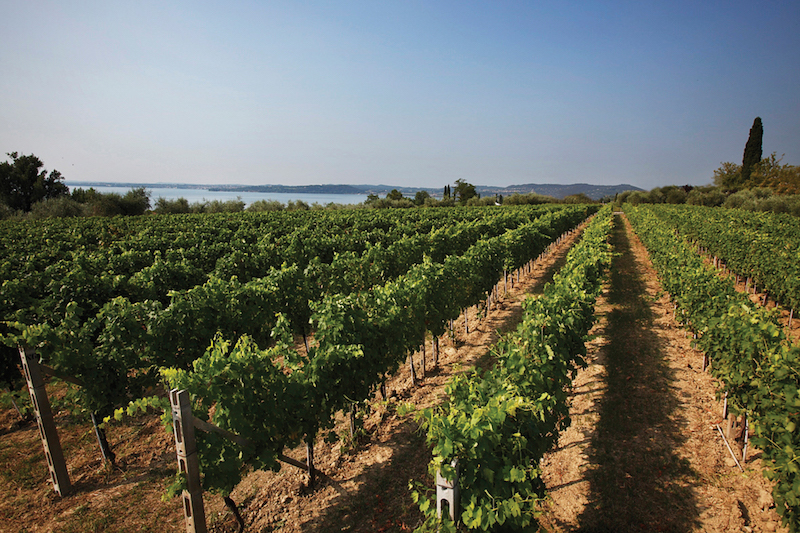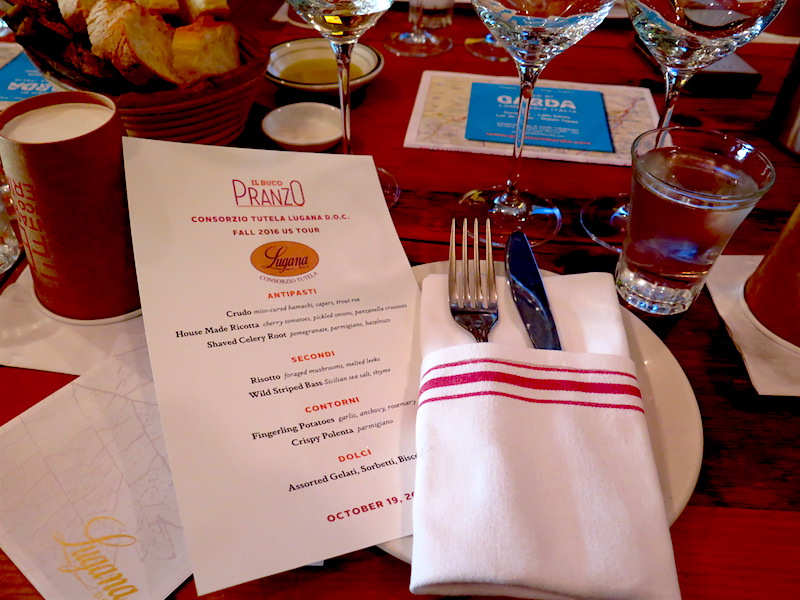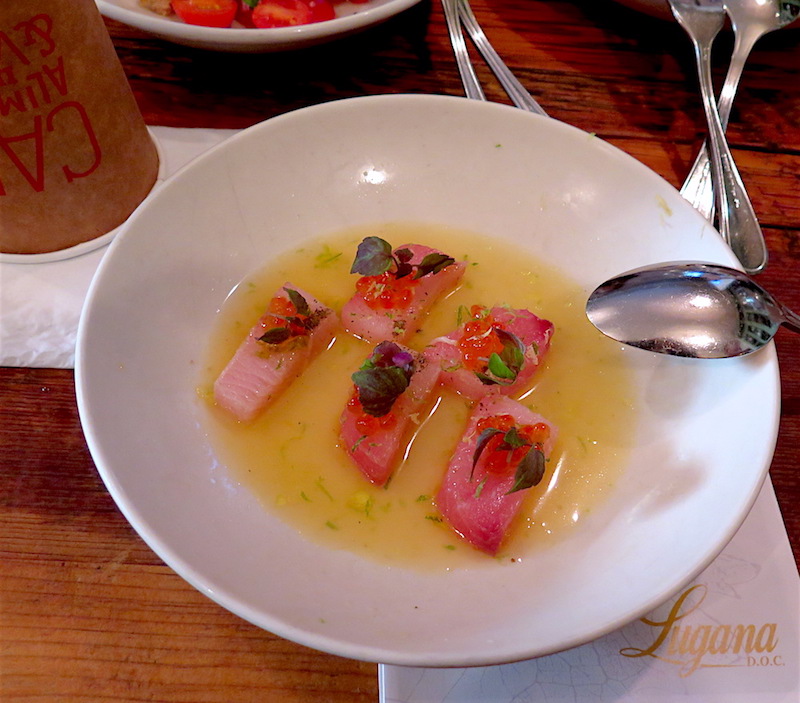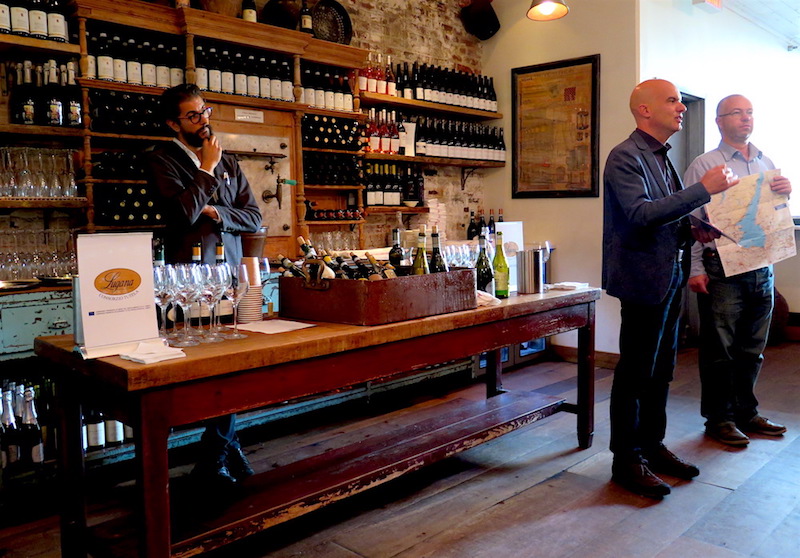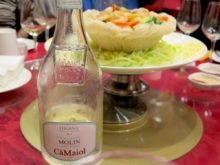For oenophiles, the discovery of a new wine can be a revelation—and when that wine opens up an appreciation for an entire region, the rewards are manifold. Those who know Lugana in Northern Italy know that the region around Lake Garda is one of the most beautiful coastlines on the planet. The lake’s beneficial microclimate and the region’s white clay soil impart the signature qualities of Lugana’s wines, notably the clean and distinctive notes of almond and citrus, its elegant body, and its potential for standing the test of time.
As a wine-growing region, Lugana has an illustrious pedigree, with a viticultural heritage that dates to the Roman Empire. Grape seeds have been found within Bronze Age pile dwellings. Throughout the Renaissance, various authors and artists praised the pleasures of the “exquisite Tribulani” and “a white wine of great quality and value.”
Celebrated today for its olive groves and wineries, vineyards and farm houses, Lugana (derived from locus, the Latin term for wood) was once a wild wetland that took centuries to clear. In 1967, Lugana became the first wine in Italy to earn a D.O.C., thereby recognizing the region’s import for what has become the most exported native wine of Lombardy. Nearly 14 million bottles were produced for the latest vintage, 70% of which was exported.
As part of Lugana DOC Wine Consortium’s recent month-long tour through five American cities, the consortium hosted a luncheon at Manhattan’s il Buco Alimentari & Vineria where nine producers of Lugana’s bounty shared their recent vintages.
The region’s Turbiana grape produces a wine the color of freshly-cut hay, with a pale green tint—at times, nearly translucent. A delicate bouquet of citrus, barely perceptible, mixes with notes of white flowers and almond. Lugana’s freshness makes it a perfect complement to the region’s maritime cuisine. From seafood antipasti or crudo to freshwater fish from the lake, river, or stream, the region’s gastronomy is well-paired with these refined and versatile wines.
Il Buco’s menu featured miso-cured hamachi crudo with capers and trout roe, alongside shaved celery root with hazelnuts and pomegranate—both of which paired nicely with Cà Maiol Lugana 2015, an elegant pale lemon yellow wine with a citrus zest and flavors of brioche that complemented the nuttiness and acidity of the antipasti.
Equally alluring was Cesari Cento Filari 2015, which opened with the intensity of fresh spring paper whites and juicy grapefruit. On the palate were notes of almond cake and a touch of lemongrass.
Il Buco’s secondi were risotto with foraged mushrooms and melted leeks served with wild striped bass dressed with Sicilian sea salt and thyme. As examples of the classic gastronomy of the region, these dishes were well-paired with Montonale Montunal 2015 and Ottella Le Creete 2015.
As explained by Carlo Veronese, Director of Lugana DOC, the white clay soil of Lugana gives its wines an unmistakable flavor—and with increased elevation, that soil becomes sandier and more in touch with stone, which lends a flavor flecked with flint. Lugana’s microclimate benefits from the lake breezes of Lake Garda and a minimal change of temperature between night and day.
The well-balanced smoothness of Montonale Montunal 2015 was marked by an arresting amalgam of white flowers and peaches, with a velvety minerality like seawater sluicing over stone. Imagine this wine paired with a dozen freshly-harvested oysters.
One of the afternoon’s most fascinating discoveries was Ottella Le Creete 2015, a subtle and dry wine nearly as clear as crystal in color with a bouquet of white blossoms and honeydew melon. Soft and fresh on the palate, the wine offered hints of pineapple with an invigorating minerality. A beautiful complement to the contorni of crispy polenta and fingerling potatoes, this wine was a pleasure on the palate.
As locals like to say, when you drink Lugana young, you appreciate its freshness. Drink Lugana after three years and what you enjoy is the wine’s full body. Hold Lugana wines for ten years and you’ll be rewarded with a wine of increased elegance and dignity. In short, it’s always a good time to drink Lugana.

